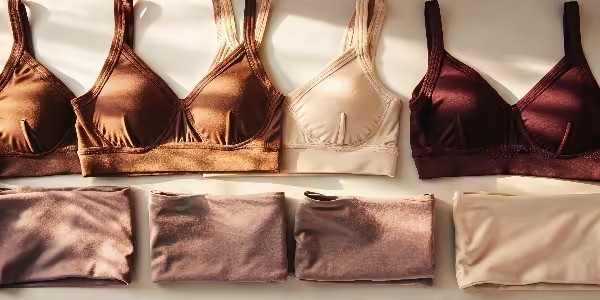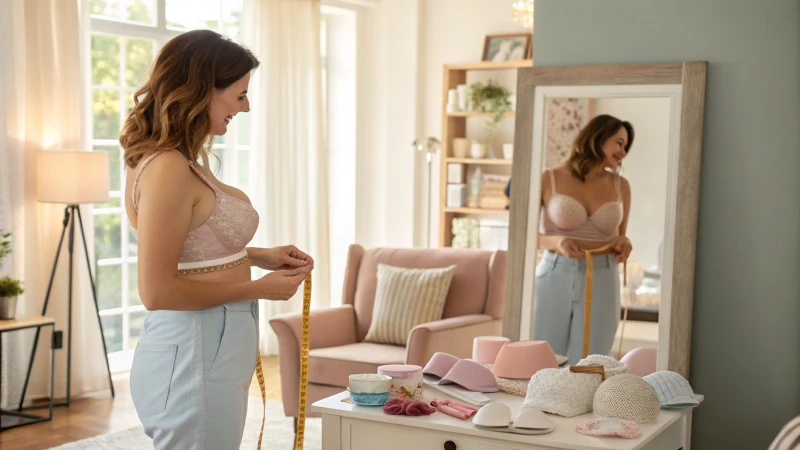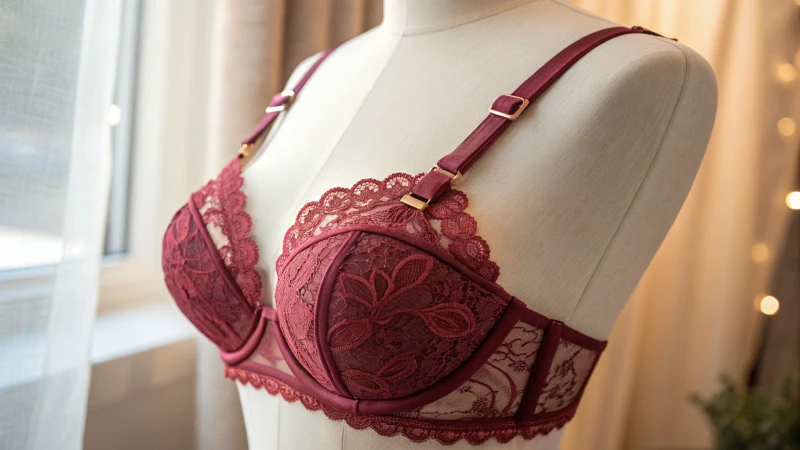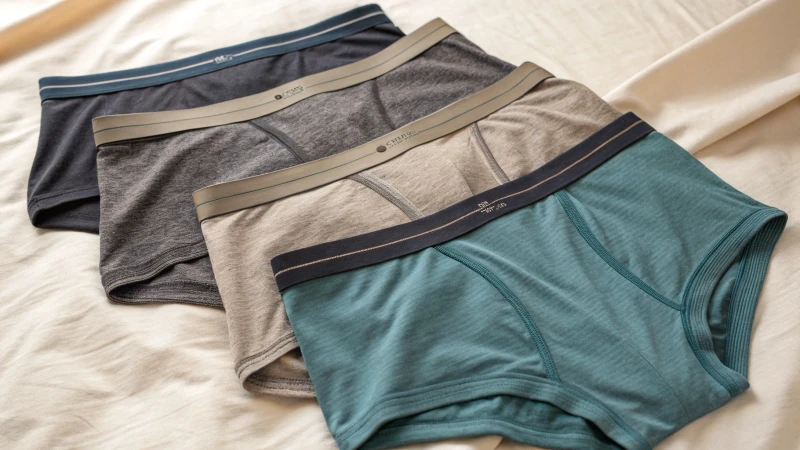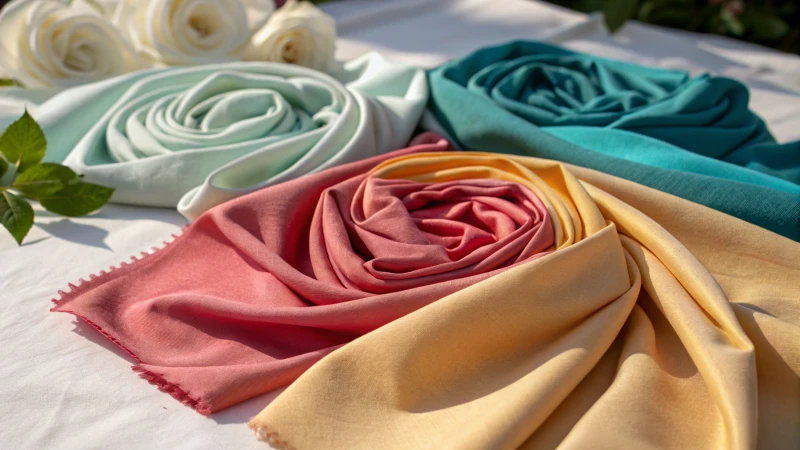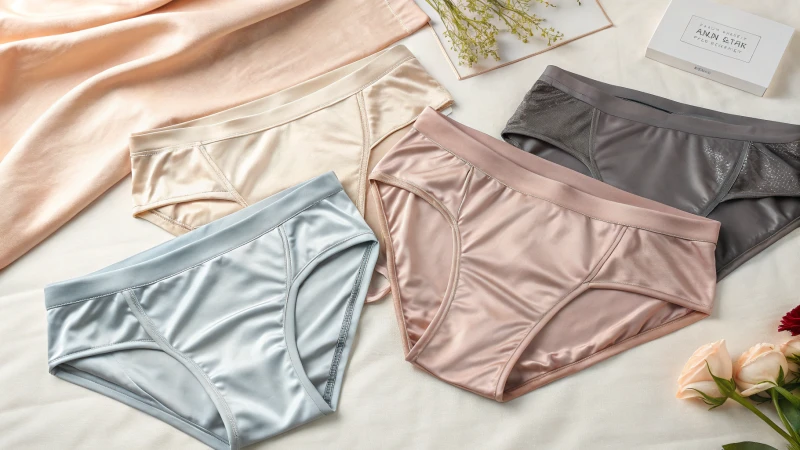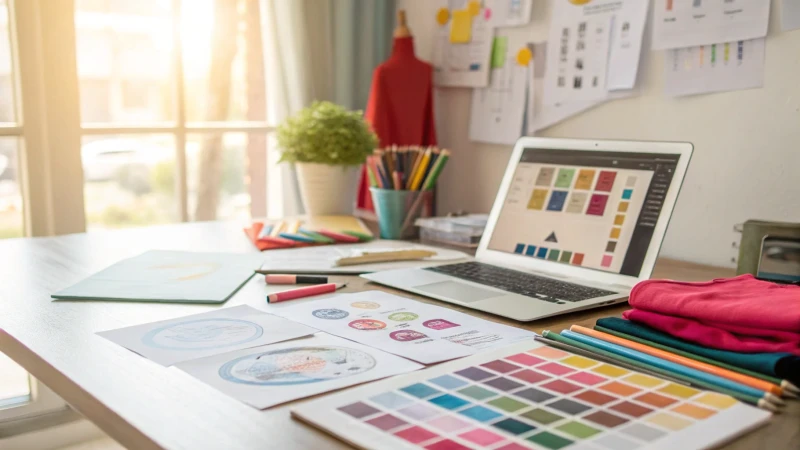
Ever felt overwhelmed trying to launch a brand without a designer? Trust me, I’ve been there.
You can create a custom brand without a designer by using reference sample images to convey your style preferences clearly. This helps reduce misunderstandings with suppliers and ensures the final product meets your expectations.
I remember when I first embarked on my branding journey. Armed with nothing but enthusiasm and a few reference images, I discovered that these samples were a lifeline. They communicated my vision when words failed, bridging gaps with suppliers and keeping the project on track. Let's explore some practical steps to make this process even smoother.
Using reference images can replace a designer.False
Reference images aid communication but don't replace design expertise.
You can build a brand independently with limited skills.True
Practical strategies can empower you to develop a brand solo.
Why Are Reference Sample Images Crucial for Branding?
Imagine trying to tell your story without any visuals—it’s like describing a vibrant sunset to someone over the phone.
Reference sample images are vital in branding as they act as a visual guide, ensuring consistent marketing materials, enhancing stakeholder communication, and aligning brand identity with consumer expectations.
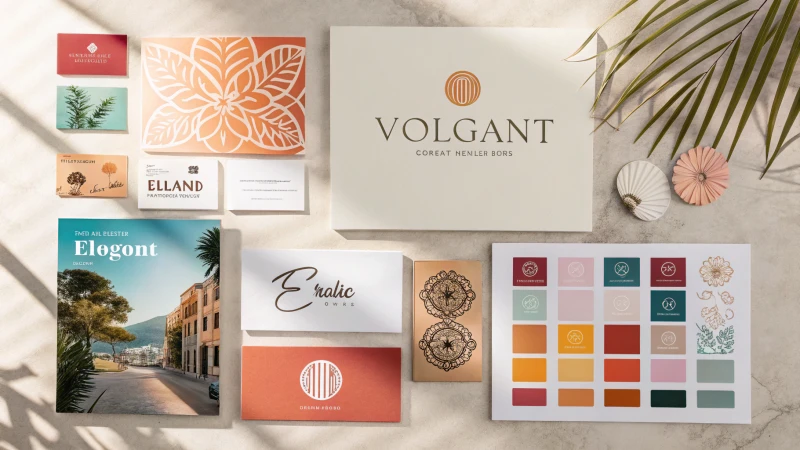
The Role of Visual Consistency
When I started working on my brand, I realized how important visual consistency is. It's like having a favorite coffee shop; you go back because it's familiar and reliable. Reference sample images are that comforting familiarity for your brand—they help maintain uniformity across platforms, making sure that every piece of content feels like it belongs to the same story. I remember noticing how the biggest brands use consistent imagery, creating an unmistakable identity. By using reference samples as a visual guide1, I learned to mirror this strategy, ensuring everything from my website to social media posts sings in harmony with my brand identity.
Enhancing Communication with Stakeholders
There was a time I struggled to communicate my vision during a product launch. That's when I discovered the magic of reference sample images. These images became my visual voice, making sure everyone—from designers to suppliers—was on the same page. It was like handing out a map before a treasure hunt; everyone knew where we were headed. These shared visuals became our blueprint, crucial for reducing misunderstandings and ensuring our efforts were aligned, especially during those high-stakes launches or rebranding phases.
| Stakeholder | Role | Impact of Reference Images |
|---|---|---|
| Designers | Create visuals | Provides clear design cues |
| Marketers | Develop campaigns | Ensures aligned messaging |
| Suppliers | Manufacture products | Reduces production errors |
Aligning Brand Identity with Consumer Expectations
In today's world, I’ve noticed that consumers want brands that echo their own values. Reference sample images are my secret weapon in this battle for relevance. They allow me to visually communicate what my brand stands for, aligning my vision with what my audience expects. These images guide the customization process2 to make sure the final product isn’t just satisfactory but actually resonates deeply with my target audience.
Every image I choose can convey nuances words often miss, helping me build lasting connections with my audience through a powerful visual language.
Reference images ensure brand consistency.True
Reference images provide a visual guide to maintain uniformity across platforms.
Stakeholders don't benefit from reference images.False
Reference images improve communication by providing clear visual direction.
What Tools Can Help in Designing Your Brand Without Expertise?
Branding doesn't need a fancy degree; just the right tools and a sprinkle of creativity!
Tools like Canva, Looka, and Hatchful are perfect for non-designers like me who want to create professional branding materials without fuss. These platforms provide templates, icons, and easy customization options, making it simple to maintain consistency across all brand assets.
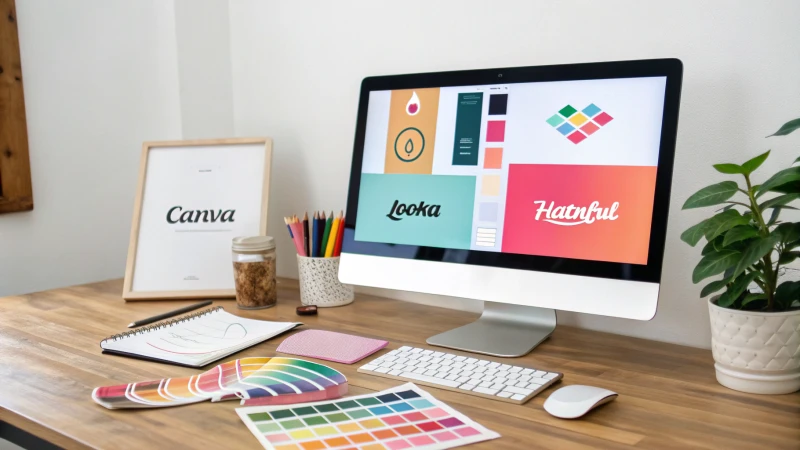
Explore User-Friendly Design Platforms
I remember the first time I tried designing my brand—completely clueless, staring at a blank screen. Thankfully, platforms like Canva3 came to my rescue. It's a lifesaver, especially if you're someone who feels overwhelmed by design jargon. With its vast array of templates, whether you need social media graphics or a presentation, Canva's got your back.
Then there's Looka4, which was like having a personal design assistant. It uses AI to suggest logo designs based on what you’re envisioning. This means even if you’re like me, starting from scratch with no idea where to begin, Looka guides you every step of the way.
For a quick fix, Hatchful5 by Shopify is another gem. It's tailored for beginners, helping you whip up logos and brand assets in a snap. No design degree needed!
Compare Tool Features and Benefits
| Tool | Best For | Key Features |
|---|---|---|
| Canva | Comprehensive design | Templates, Icons, Flexibility |
| Looka | Logo creation | AI suggestions, Easy process |
| Hatchful | Quick branding | Fast setup, Beginner-friendly |
Consider Additional Resources for Design
If you're looking to get a bit more creative beyond templates, try Snappa6. It's great for editing images and setting custom dimensions—perfect for when you want your visuals to stand out.
Even with these amazing tools, I've learned that having a clear vision or reference images is crucial. They act like a bridge between your ideas and the final product, ensuring what you create truly resonates with your audience. So don't worry about not being an expert; with these resources at your fingertips, you can bring your brand vision to life.
Canva offers templates for social media graphics.True
Canva provides a variety of templates, including those for social media.
Looka is designed for comprehensive design needs.False
Looka focuses primarily on logo creation using AI suggestions.
How Can I Communicate Effectively with Suppliers Using Samples?
Ever found yourself lost in translation with suppliers? Trust me, leveraging samples can change everything in your communication game.
To communicate effectively with suppliers using samples, share clear reference images that highlight styles, colors, and details. These visuals minimize misunderstandings, streamline customization, and improve product quality.

The Importance of Reference Samples
I remember when I first started working with international suppliers—it was like playing a game of telephone. The messages always got jumbled up. Then, I stumbled upon the magic of reference samples. Think of them as visual translators that convey your exact needs without a word. A well-chosen sample can save you from endless explanations, especially if you're dealing with language barriers or time zone differences.
| Benefits of Using Samples | Description |
|---|---|
| Clarity in Communication | Samples visually explain style, fabric, and color preferences. |
| Reduced Misunderstandings | Eliminates ambiguities, ensuring both parties are on the same page. |
| Streamlined Customization | Directs the production process towards desired outcomes. |
Steps to Effective Communication
Select Appropriate Samples: I've learned that choosing samples that precisely reflect my vision makes all the difference. It's like having a cheat sheet for my expectations.
Provide Detailed Annotations: Along with the sample, I include notes pointing out specifics I want replicated—this keeps everyone on track.
Use Technology for Sharing: Platforms like digital platforms7 have been a game-changer for me, allowing easy sharing of high-resolution images with my suppliers.
Encourage Feedback: I always make it a point to ask suppliers for feedback to ensure they understand what I'm aiming for.
Utilizing Technology for Efficiency
Incorporating technology into my communication toolbox has been a lifesaver. Tools like video conferencing and project management software mean I can have real-time discussions and updates without any hassle. Platforms offering image annotation8 and collaborative workspaces help me keep everything organized and everyone on the same page.
- Example Tools:
- Video Conferencing: Zoom, Microsoft Teams
- Project Management: Asana, Trello
By weaving these practices into my routine, I've created a collaborative environment where both I and my suppliers can thrive. It's not just about getting things done; it's about building relationships that last.
Reference samples reduce verbal explanations needed.True
Samples visually convey expectations, minimizing verbal communication.
Digital platforms are ineffective for sample sharing.False
Digital platforms enable easy sharing of high-resolution images.
How Can I Brand My Clothing Line Without Spending a Fortune?
Branding a clothing line on a budget? It's more achievable than you think. Explore creative ways to make your brand shine without emptying your wallet.
To brand your clothing line cost-effectively, harness the power of social media, team up with micro-influencers, focus on stunning visuals, and design a standout logo. These strategies boost visibility and engagement while keeping costs in check.

Utilize Social Media Platforms
Social media is an invaluable tool for emerging brands, offering a platform to reach a wide audience without substantial financial investment. Platforms like Instagram and TikTok are particularly suited for fashion brands9 due to their visual nature. Regularly posting engaging content, such as style tips or behind-the-scenes looks, can foster a community around your brand.
When I first started out, I quickly realized that social media was my best friend—and it didn't cost a thing beyond time and creativity. I'd post sneak peeks of new collections, share styling tips, or give followers a behind-the-scenes look at my creative process. Not only did it help me build a community of fashion lovers, but it also made my brand more relatable and accessible.
Collaborate with Micro-Influencers
Partnering with micro-influencers can provide authentic exposure to your target audience. These influencers typically have high engagement rates and are often more affordable than major influencers. When choosing influencers, focus on those whose style aligns with your brand's ethos, ensuring a genuine connection10 with their followers.
One day, I stumbled upon an influencer who seemed like the human embodiment of my brand's vibe. We hit it off immediately, and our partnership brought authentic exposure to her followers, who loved our style synergy. Micro-influencers might not have millions of followers, but their engagement is off the charts. Plus, they're often more budget-friendly than big-name influencers.
High-Quality Visual Content
Investing in high-quality images is crucial. Even if you can't afford professional photographers, using a good smartphone camera and editing apps can suffice. The goal is to present your clothing line in the best possible light, enhancing its appeal through crisp and aesthetically pleasing images11.
I'll be honest—professional photography wasn't in my budget initially. But I learned to make do with what I had: a good smartphone camera and some nifty editing apps. The goal was simple—make my clothes look as amazing online as they did in person. Crisp, clean images made all the difference in showcasing the quality and style of my pieces.
| Strategy | Benefit |
|---|---|
| Social Media Engagement | Broad reach without high costs |
| Micro-Influencer Collaborations | Authentic exposure to a niche audience |
| High-Quality Visual Content | Enhances product appeal and brand image |
Develop a Memorable Logo
A unique and memorable logo can set your brand apart from competitors. This doesn't mean you need to hire an expensive designer. Online tools and platforms allow you to create professional-looking logos on a budget. A well-designed logo serves as the face of your brand, making it easily recognizable to customers12.
Creating my logo was one of those "aha" moments where everything clicked. While hiring a designer was out of reach, I used online tools to craft something that truly felt like the essence of my brand. A memorable logo became the face of my clothing line, making it recognizable and setting it apart from competitors.
Host Pop-Up Events or Virtual Shows
If feasible, organizing pop-up events or virtual fashion shows can create buzz and attract new customers. These events provide an opportunity for potential buyers to engage with your products directly. Virtual shows can be streamed on social media platforms, combining the power of digital marketing13 with the excitement of a live event.
There's nothing quite like seeing people react to your creations in real-time. Hosting pop-up events or virtual fashion shows was my way of bringing the excitement of fashion week to my audience without the hefty price tag. Streaming these events on social media mixed digital marketing's reach with the thrill of live interaction.
By integrating these strategies into your branding plan, you can effectively enhance your clothing line's presence without significant financial outlay. Each strategy provides unique benefits that collectively contribute to building a strong brand identity in the fashion industry.
Social media platforms require high financial investment.False
Social media offers broad reach without substantial financial costs.
Micro-influencers have higher engagement than major influencers.True
Micro-influencers typically engage more authentically with their audience.
Conclusion
Creating a custom brand without a designer is achievable by using reference images to communicate style preferences, ensuring visual consistency, and utilizing user-friendly design tools for effective branding.
Learn how maintaining visual consistency across platforms reinforces brand recognition and consumer trust. ↩
Explore how reference images guide customization to ensure products align with brand identity and consumer preferences. ↩
Discover how Canva's extensive library of templates and icons can simplify your brand design process. ↩
Learn how Looka uses AI to craft unique logos tailored to your brand's personality. ↩
Explore Hatchful by Shopify to quickly generate professional logos and brand assets. ↩
Find out how Snappa enhances your branding with advanced image editing capabilities. ↩
Explore digital platforms that facilitate easy sharing of sample images with suppliers. ↩
Discover tools that allow you to annotate images effectively for better supplier communication. ↩
Explore which social media platforms are most effective for promoting fashion brands and how to leverage them. ↩
Discover tips on selecting micro-influencers who align with your brand values and audience. ↩
Learn techniques for capturing stunning fashion images using budget-friendly tools. ↩
Find affordable tools and tips for creating an impactful logo for your brand. ↩
Understand the advantages of hosting virtual fashion shows in building brand awareness. ↩

